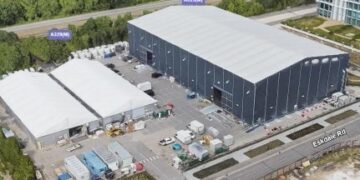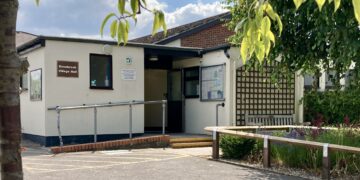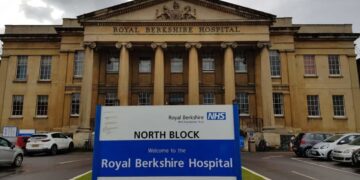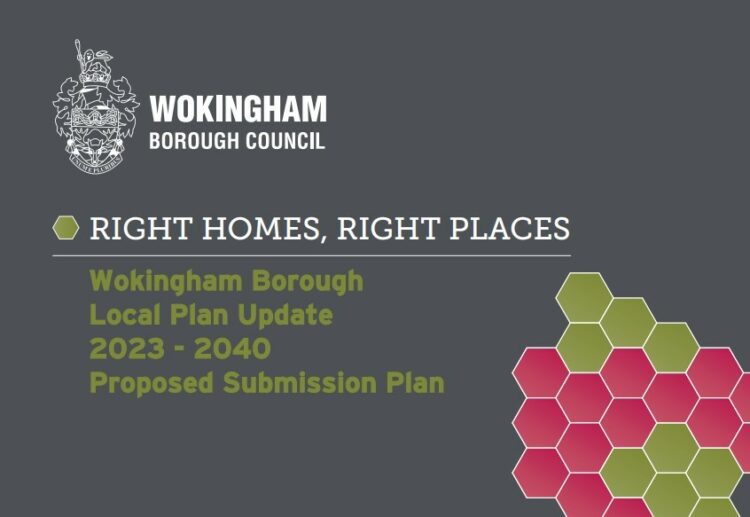A masterplan for building more than 11,000 homes across Wokingham Borough by 2040 will come before councillors tonight (Thursday), although its approval is not guaranteed.
The local plan, which sets out how housing will be delivered in the borough, has been a constant source of conflict between parties in the chamber.
Councillors will be asked to approve the plan in its entirety, but it’s not entirely certain that will happen.
Should the plan be rejected, the Borough will be wide open to speculative planning applications that, if rejected locally, would likely be won on any appeal to a government inspector.
Wokingham Borough Council has made arrangements to accommodate some of the expected protesters in a meeting room at its Shute End headquarters. Access to the council chamber will be restricted, although the proceedings – as with every meeting – will be streamed via the council’s website and on YouTube.
Ahead of the meeting, here’s everything you need to know about the local plan, and what it means for the borough if it’s approved.
A local plan is a key document which identifies the areas that are the most appropriate places for development, with regard to future planning applications.
The last local plan, adopted in 2014, governs how development will take place in the borough until 2026.
The new draft plan sets out all aspects of how Wokingham Borough Council will develop to meet residents’ needs until 2040.
Where housing is and isn’t allowed, as well as the type of housing, are set out in the 1,400+page document, as well as what is needed alongside developments, such as new schools and employment opportunities.
The new local plan proposes to provide the majority of housing in large scale, strategic developments. In this way, the council said it can provide more affordable housing and infrastructure, such as ‘high-quality schools, roads, parks, community buildings and more’, paid for by developers.
The largest proposal is for 3,900 homes at Hall Farm between Shinfield, Sindlesham and Arborfield. This has been reduced from 4,500 homes.
Along with homes, amenities including primary and secondary schools, a country park and new bridge over the M4. It is close to Thames Valley Science Park, which provides employment, and has sustainable transport links, according to the plan.
Two existing major developments, including Arborfield Garrison and South Wokingham Strategic Development, are being proposed for further expansion..
An additional 900 homes are being proposed for the Arborfield Garrison development, which currently has plans for 3,500. It will become a new village, including schools and sports pitches, a district centre, restaurants, cafes and play areas.
The South Wokingham plan is an urban extension of the town, situated near Waterloo Road and the railway track. The plan adds 1,100 houses to the existing plans for 2,500, raising the number delivered to 3,600.
All three developments will include 40% affordable housing – up from previous targets of 35%.
Sites no longer proposed for homes include the former M&S building in Peach Street, the former library in Denmark Street, Molly Millars Business Park, Rooks Nest Farm in Barkham and land northwest of Hogmoor Lane in Hurst.
Outside the strategic development locations, new sites proposed include High Barn Farm in Barkham, land south of London Road towards Bracknell, and the Wokingham Borough Council offices at Shute End.
Along with housing, the plan improves protection of green spaces by designating more than 100 ‘local green spaces’. It also sets out aims for residential and commercial developments to be zero-carbon, where viable.
As well as this, a strategy to reduce reliance on cars and make active travel easier is set out.
Why is it such a divisive issue in Wokingham?
The local plan has been a hot topic for years.
The Liberal Democrats, since taking control of the council in 2022, decided to review a draft plan it inherited from the previous Conservative administration.
The Conservatives have frequently criticised the Lib Dems for failing to produce a local plan, as without one it would ‘tilt’ the balance for developments to be approved more easily. This is a planning principle applied in cases without a local plan that favours granting planning permission – unless adverse impacts significantly outweigh the benefits.
During the general election campaign, Conservative candidate Lucy Demery accused the Lib Dems of withholding the local plan as it could affect her rival Clive Jones’ chances.
Mr Jones, who ran the council when the Lib Dems took over, was also criticised for ‘u-turning’ on his opposition to Hall Farm.
Council leader and executive member for housing, partnerships and the local plan, Stephen Conway, said at a recent full council meeting that his party wanted to see where they could ‘manoeuvre’ on what had already been decided.
This was limited, according to councillor Conway, while the leader of the Conservative group, councillor Pauline Jorgensen, claimed that it ‘i.. s possible, although difficult, to take sites in and out of the local plan’.
What happens next?
Councillor Stephen Conway, leader of the council, has asked councillors to vote to approve the draft local plan.
This is especially important given the higher housing targets proposed for Wokingham by the new Labour government – which would demand 1,308 to be built per year.
Councillor Conway argued that by pushing through this local plan, the authority would have ‘time and space to plan for any changes in national planning policy’.
If it does get approval, it will go to a ‘Regulation 19’ consultation which will run for six weeks. Residents can take part, but will only be able to comment on limited matters, like whether the correct legal procedures have been followed in preparing the plan.
No consultation will be possible regarding the inclusion of individual sites in the plan. Previous consultations during 2021 and 2022 were used to produce the content and policies proposed in the local plan.
After this, it will go to an independent planning inspector who will consider all feedback before deciding whether the council can formally adopt it.
Once adopted, it will play a pivotal role in planning decisions.














































